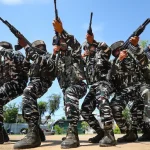The conflict between India and Pakistan has been one of the most enduring and volatile rivalries in South Asia since the two nations gained independence from British rule in 1947. The India-Pakistan wars have shaped the region’s political, military, and diplomatic landscapes, resulting in multiple battles, border tensions, and continued instability, especially over Kashmir.
📜 Historical Background
India and Pakistan were created in August 1947 during the partition of British India. The partition led to widespread violence, mass migration, and deep-rooted hostility, particularly over the princely state of Jammu and Kashmir. Since then, the two countries have fought four major wars and numerous border skirmishes.
⚔️ Timeline of Major India-Pakistan Wars
1. First India-Pakistan War (1947–1948)
Cause: Pakistan-backed tribal invasion of Kashmir
Outcome: Ceasefire brokered by the United Nations; Kashmir was divided between India (J&K) and Pakistan (PoK)
2. Second India-Pakistan War (1965)
Cause: Pakistan launched “Operation Gibraltar” to infiltrate Kashmir
Outcome: Stalemate; both nations suffered heavy losses; ceasefire under the Tashkent Agreement
3. Third India-Pakistan War (1971)
Cause: Pakistan’s internal crisis in East Pakistan (now Bangladesh)
Outcome: Decisive Indian victory; Bangladesh was created as an independent nation
Significance: Over 90,000 Pakistani soldiers were captured—the largest surrender after WWII
4. Kargil War (1999)
Cause: Pakistani soldiers and militants occupied Indian territory in Kargil (Ladakh)
Outcome: India regained lost territory; international condemnation of Pakistan’s actions
🧨 Root Causes of Conflict
- Kashmir Dispute: The most persistent issue; both countries claim it in full
- Religious and ideological divide: Hindu-majority India vs. Muslim-majority Pakistan
- Terrorism: Cross-border terrorism and militant groups have worsened tensions
- Water disputes: Over the Indus Waters Treaty
- Border violations: Frequent shelling along the Line of Control (LoC)
🕊 Peace Efforts and Ceasefires
Despite the wars, several attempts at peace have been made:
- Tashkent Agreement (1966)
- Simla Agreement (1972)
- Agra Summit (2001)
- Ceasefire Agreements (2003, 2021)
However, diplomatic relations remain fragile, especially after terror attacks like the 2001 Parliament attack and the 2019 Pulwama attack.
🚀 Modern Military Standoff
- India conducted airstrikes in Balakot (2019) after Pulwama
- Both countries possess nuclear weapons, making the conflict extremely sensitive
- Ongoing tensions along the LoC, though large-scale war has been avoided in recent years
🌍 Impact of India-Pakistan Wars
On the Region:
- Increased militarization and defense spending
- Rise in nationalism and border hostility
- Displacement of civilians in border areas
On Global Politics:
- South Asia is viewed as a nuclear flashpoint
- Other nations (e.g., USA, China) often mediate or observe developments closely
- Terrorism and cross-border tensions affect international security
Frequently Asked Questions – India Pakistan War
The first war between India and Pakistan occurred in 1947–48 over the princely state of Jammu and Kashmir.
India and Pakistan have fought four major wars—in 1947, 1965, 1971, and 1999 (Kargil War).
The conflict primarily revolves around the territorial dispute over Jammu and Kashmir, along with issues like terrorism and border violations.
The 1971 war led to the liberation of East Pakistan and the creation of Bangladesh.
Yes, both nations are nuclear-armed, making the conflict a potential global threat if escalated.





